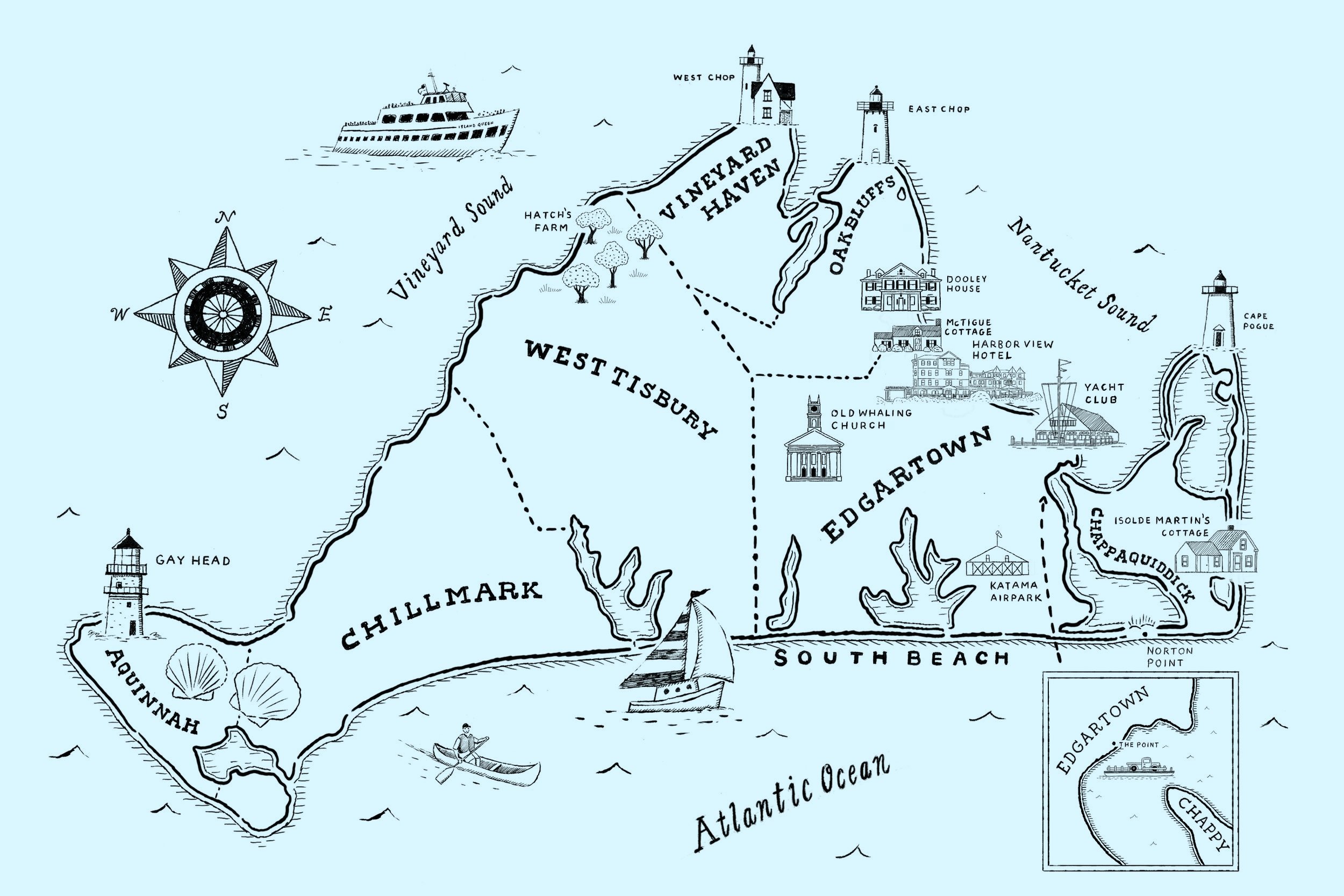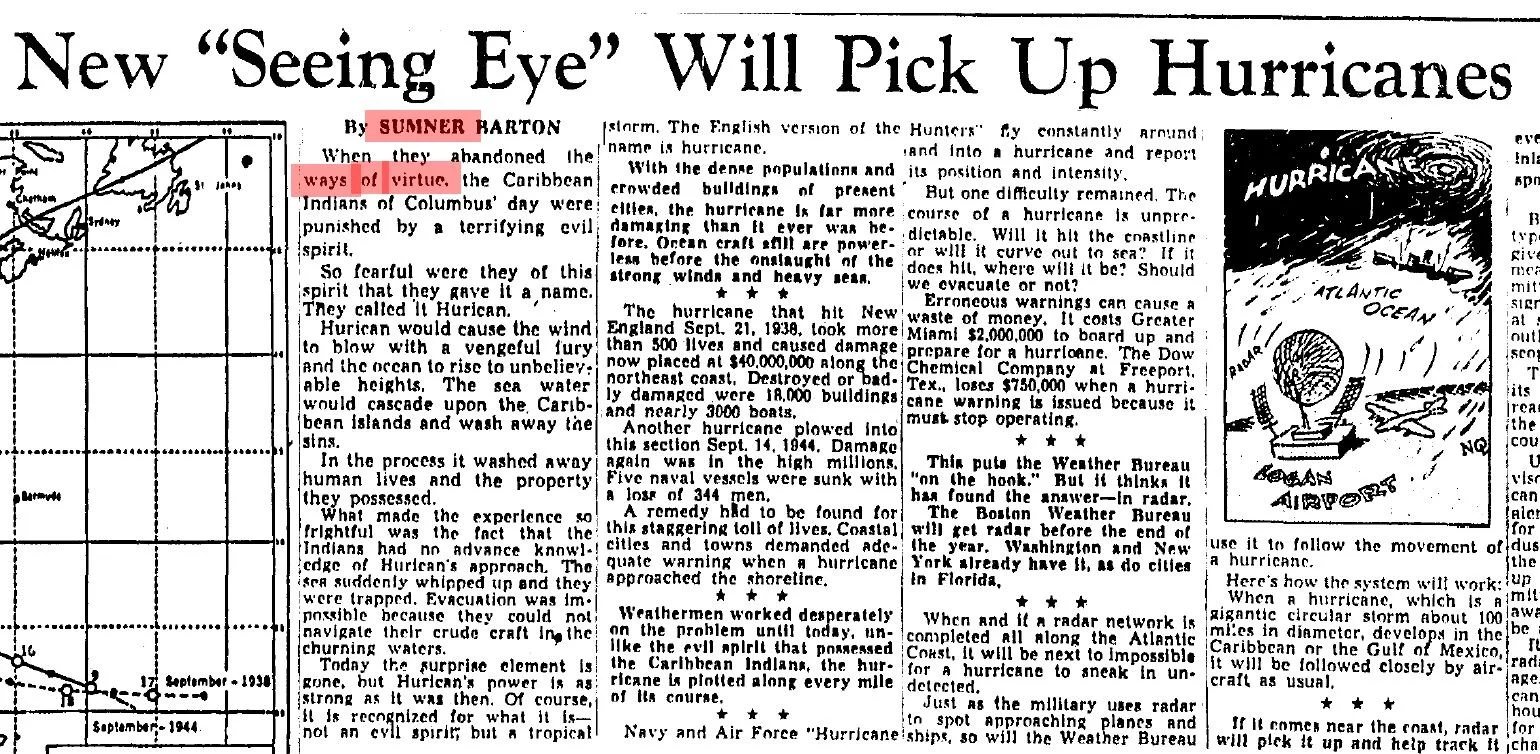
“When they abandoned the ways of virtue, the [Taíno people] of Columbus’ day were punished by a terrifying evil spirit…
They called it Hurican.”
AUTHOR’S NOTE
February 2025
Sumner Barton wrote the above lines in August 1954, as the opening to a Boston Globe article that would prove eerily prescient. It was a piece on a new radar technology poised to revolutionize how New Englanders detected and prepared for dangerous weather. Barton was contextualizing storms that, until then, had blindsided communities with a seemingly capricious vengeance. Just two days after his story went to print, Hurricane Carol ravaged the East Coast. Days after that, it was Edna. Radar’s arrival proved too late for New England that summer. But what if, for a certain set of imagined lives, it hadn’t entirely missed the moment?
For years, as I worked through the slow, circuitous process of writing this book, people often asked: “What’s it about?” A fair question, one I never quite managed to answer succinctly. I lacked a tidy logline, especially during the early going, when the book was more a tangle of ideas than a cohesive whole. But I always knew that Barton’s article lived at its heart. I’d already decided my novel would feature heavy weather — storms have fascinated me for as long as I can remember. Birds and wind currents also fluttered persistently through my thoughts. The Sabine gull, for instance, inspired the name of my protagonist.
And then, in reading about hurricanes, I came across a new favorite word: entrain. Scientifically, entrainment refers to the process by which something — like a hurricane’s eye — draws in and carries along whatever might get caught in its orbit. Migratory birds, for example, can be entrained into storms. And of course there’s a second, more literal meaning: to board a train. That image — queues on a platform, the anticipation of departure—seized my imagination. The passengers I envisioned were soldiers.
Thus, the novel began to take form: birds, storms, radar, soldiers, and eventually airplanes. My leading man necessarily became a pilot, an Army Air Corps veteran swept up by forces beyond his control. Themes of connection and separation began to surface. I realized there was no better setting to explore these than an island. Martha’s Vineyard, with its windswept beauty and layered history, provided the perfect canvas. And then Chappaquiddick, too — a story within a story, a place within a place. Chappy connects to its larger neighbor by a tenuous sandspit, sometimes breached by the same storms that fascinated me. The geography worked with me from the start.
Meanwhile, I embellished Edgartown’s 1950’s reality with a touch more opulence and glamour than would be strictly accurate. (For those keeping track, you’ll find a better explanation in my acknowledgments.) I also leaned into the very real quaintness of midcentury life: letters and telegrams, summer homes without television sets, being apart and alone when such a thing was still possible . . .
Now that it’s out there in world, I’m asking myself as much as anybody: “What is this book about?” As best as I can tell, it’s about love — unexpected, clumsy, staggering love — complicated by life’s inevitable stalls and upheavals. It’s about a summer romance, about growing up, venturing down strange paths, falling, failing, daring to move forward. It’s about community and class, nature and nurture. It’s about a few of my favorite things: storms, weddings, handwritten letters in mail, and the irresistible prettiness of a black-and-white era. Maybe too, like the radar technology Sumner Barton was so excited to announce, it’s about searching for signals among the clouds — hoping to glimpse, for good or ill, whatever might be on its way.
Pictured above: Edgartown, MV map highlighting Ways of Virtue landmarks designed by Ryan O’Rourke.
